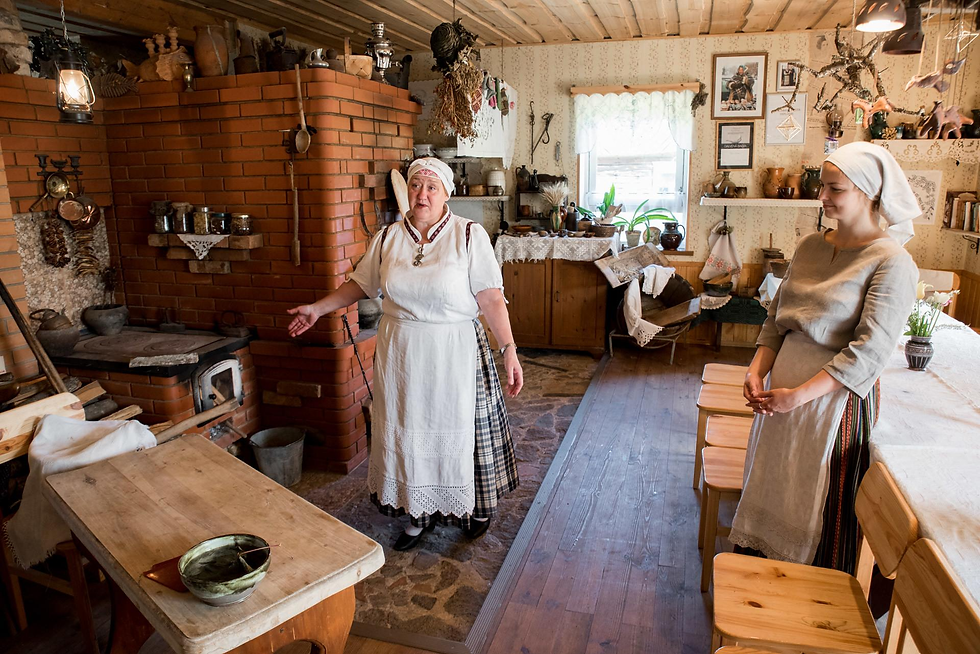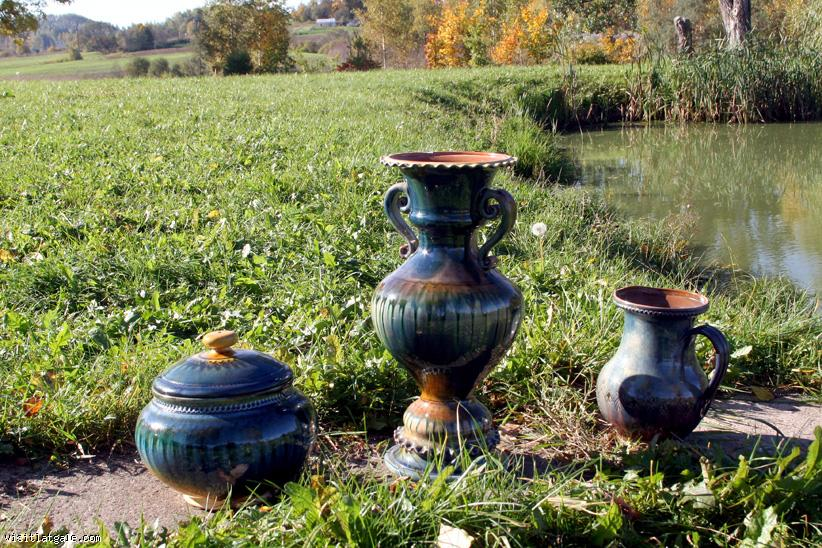The Land of Blue Lakes | Discovering the Soul of Latgale, Latvia
- Anastasiya S. Babenko

- Sep 15
- 3 min read
Meet Latgale - Latvia’s underestimated travel gem. Its untouched landscapes, soulful traditions, and welcoming people make it a destination for those who long to go beyond the usual travel routes.
The easternmost region of Latvia, is often called the Land of Blue Lakes, thanks to its crystal clear waters surrounded by lush forestry. Not often mentioned in the must-see tourism brochures, it is a perfect destination for curious travellers, seeking a peaceful yet fulfilling getaway, full of exciting discoveries. Here, the pace slows down, nature leads the way, and centuries-old crafts and stories remain alive in everyday life.

With more than 1,200 lakes, Latgale offers countless places to swim, paddle, fish, or simply enjoy the reflections of pine forests on still waters. Lake Rāzna, often referred to as the “sea of Latgale,” is the largest, surrounded by a national park with trails and viewpoints. Smaller lakes, such as Lake Drīdzis (the deepest in Latvia) draw visitors who seek quiet walks, birdwatching, and evenings by the water. In summer, meadows bloom with orchids, wildflowers, and butterflies, painting the countryside in soft colours.
Nurturing Local Crafts and Traditions
Markets in small towns reveal Latgale’s charm: stalls filled with honey, cheese, and herbal teas, often sold by the people who made them. Conversations with locals are as memorable as the products themselves, carrying stories of resilience, humour, and a deep love of place.

For travellers seeking outdoor adventure, Latgale also offers horse riding experiences. Riding through meadows, forests, and lakeside trails allows visitors to connect with the landscape in a truly authentic way. Several stables near Krāslava and Ludza offer guided rides for both beginners and experienced riders. In winter, sleigh rides pulled by sturdy local horses make for a memorable journey across snow-covered fields.
However, Latgale’s crafts are not only found in farmsteads and markets but also celebrated in local museums and workshops that keep traditions alive. Smaller craft centres often open their doors to visitors for hands-on experiences: weaving workshops where you can try the loom, pottery sessions guided by skilled Latgalian masters, and even bread-baking classes in outdoor ovens. These places are more than exhibitions – they are living classrooms, where travellers are invited to touch, create, and understand the skills that have shaped Latgale’s cultural identity for generations.

Latgale is renowned for its ceramics, a tradition recognised as part of Latvia’s national cultural heritage. Villages around Rēzekne and Ludza remain home to potters whose earthy jugs, bowls, and candleholders are both practical and beautiful. Travellers can join workshops to shape clay with their own hands, taking home more than a souvenir but a piece of history.
Birch-bark craft, practised by artisans like Jurijs Ivanovs in Savelinki, is another hidden gem. Using the bark’s natural strength and patterns, he creates finely made boxes and everyday items. These crafts, once central to rural life, are now treasured symbols of resourcefulness and beauty, connecting modern visitors to Latgale’s roots.
Protecting Sacred Sites
Latgale’s spiritual heart beats through its churches. The Basilica of the Assumption in Aglona, a white baroque masterpiece, is one of the most important Catholic sites in Northern Europe, drawing thousands of pilgrims every August. In Rēzekne, the Sacred Heart of Jesus Cathedral impresses with its striking neo-Gothic architecture. Meanwhile, smaller wooden churches and Orthodox chapels tucked into villages add to the region’s quiet beauty, each one carrying centuries of devotion and community history.

Savelinki chapel, raised amidst 18th century, is a protected object of local and national importance, showcasing fascinating antique carved altars and handmade decorations. It carries on the legacy of travelling Dominican monks and numerous legends built around it.
A cosy village of Pasiene hides another spiritual gem – a Roman Catholic Church built in 1761. Reconstructed years ago, it now delights local worshipers and international visitors with majestic Polish baroque interiors and museum taking tourists through to the history of religion.

A well-deserved peaceful escape
Latgale is not about ticking off sights – it is about experiences that linger. It’s the taste of homemade jams on fresh bread, the feel of clay shaping into a bowl, the sound of church bells echoing across a lake. It is the laughter at a village fair, the rhythm of hooves on a forest path, and the glow of a bonfire on midsummer night. For those who seek authenticity, connection, and beauty in its simplest form, Latgale is one of Latvia’s brightest treasures.
To travel to Latgale, you can drive from Riga, take a bus, or use a combination of train and bus, with options available from major cities like Riga and Rezekne.
Information for tourists: www.latgale.travel




Comments